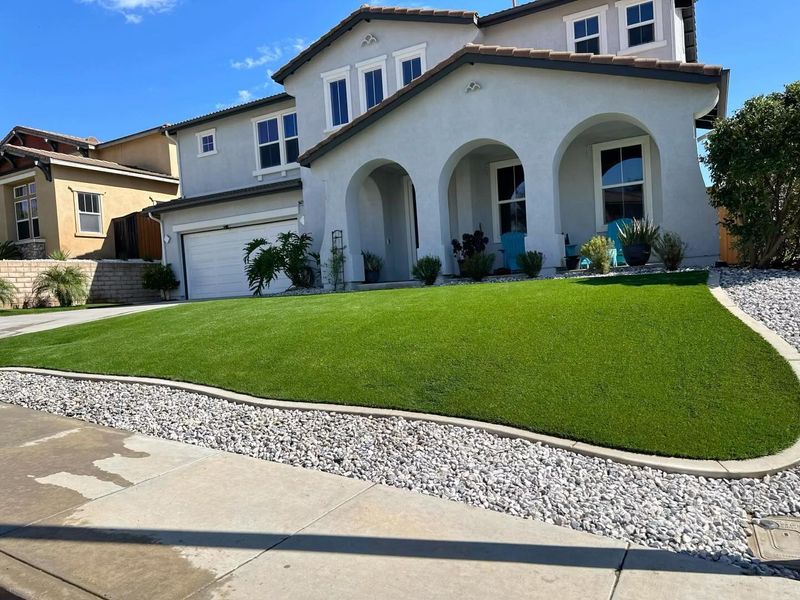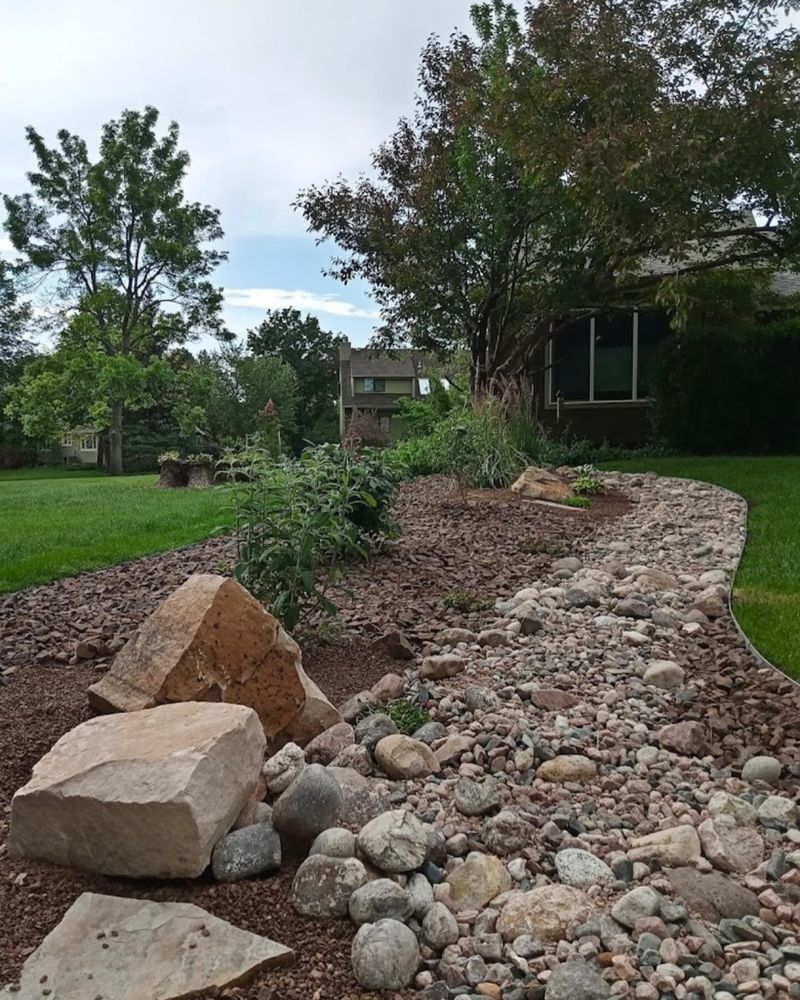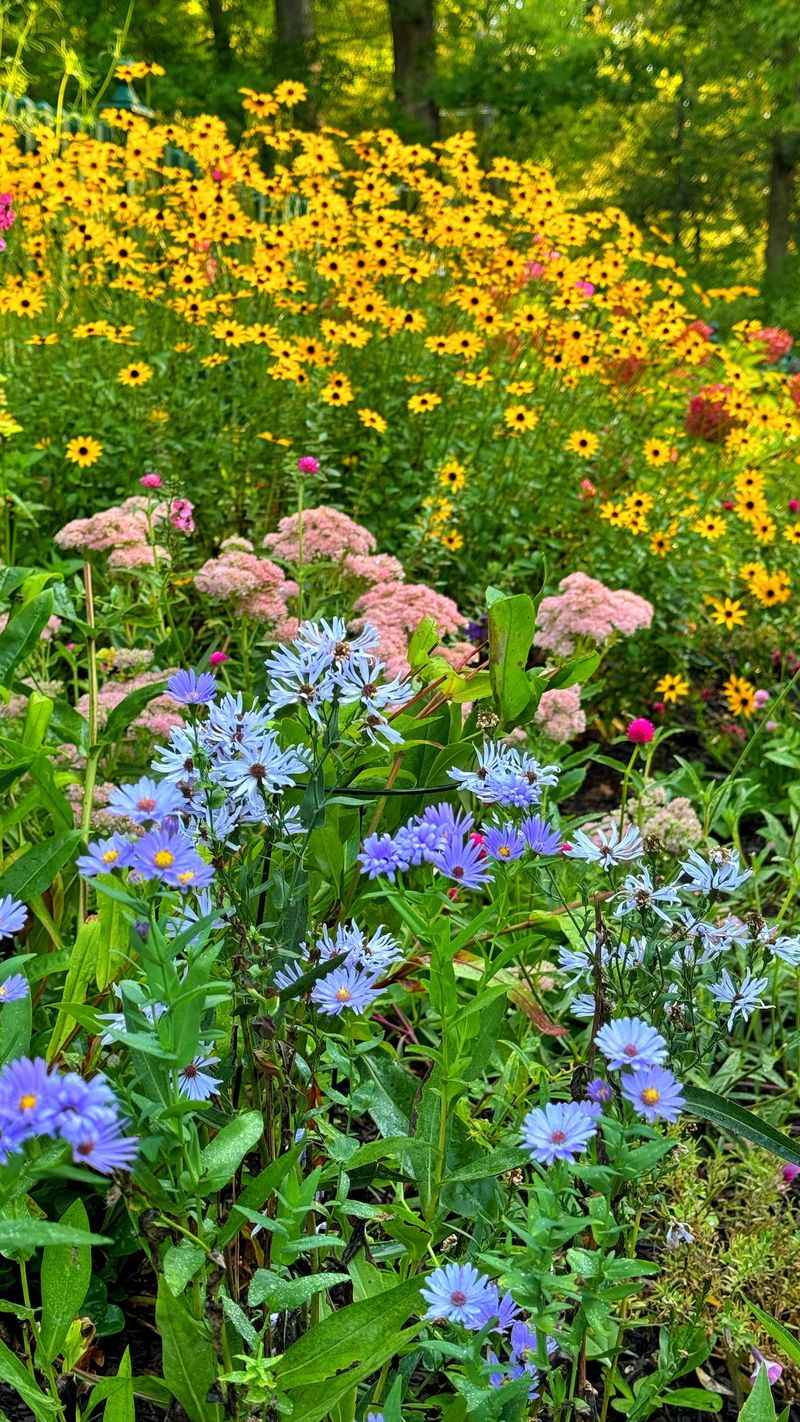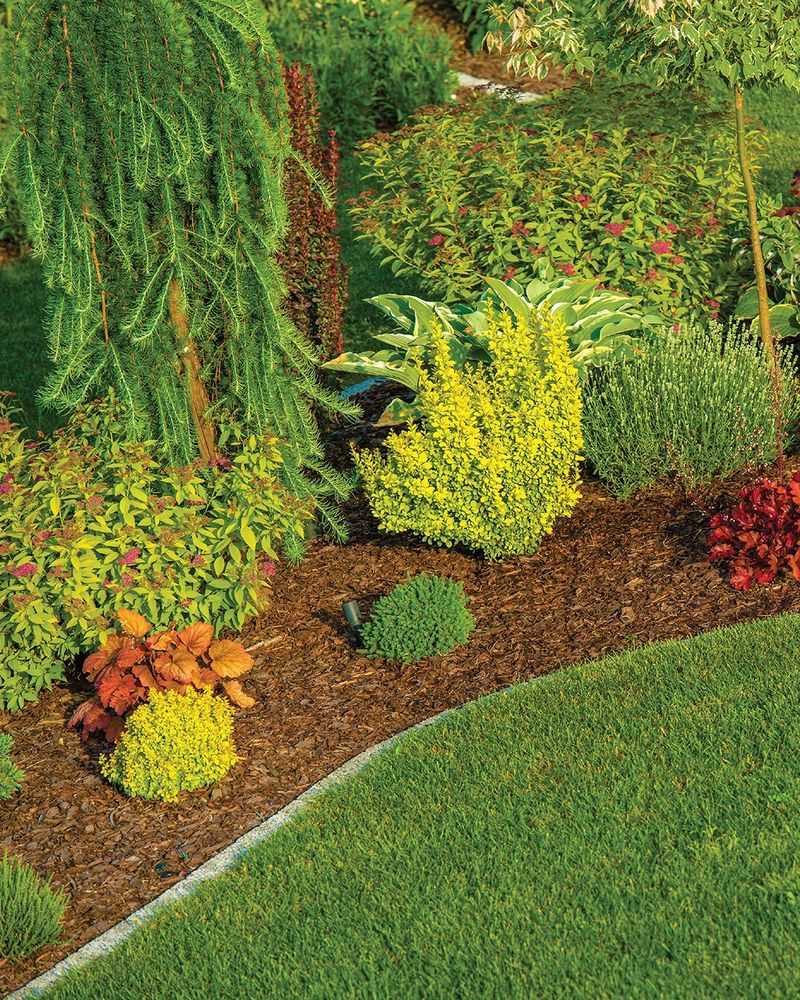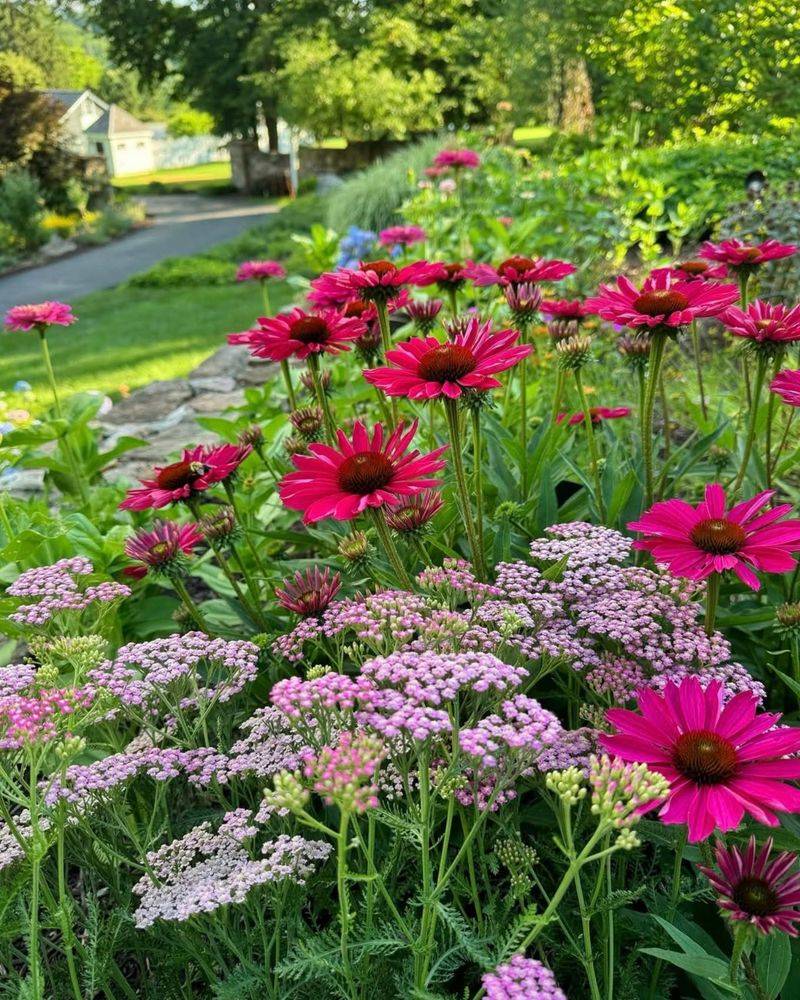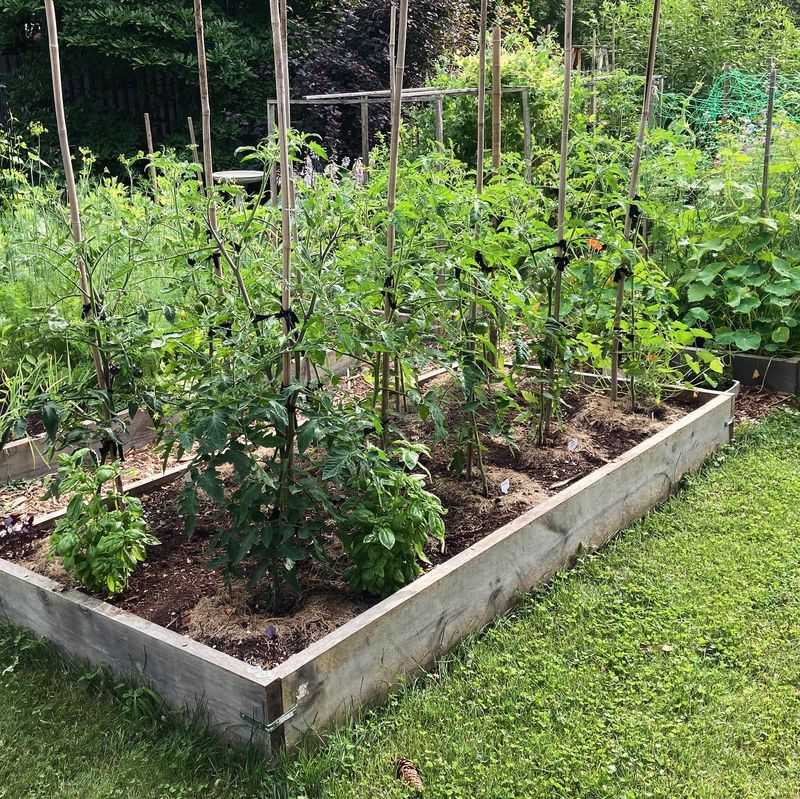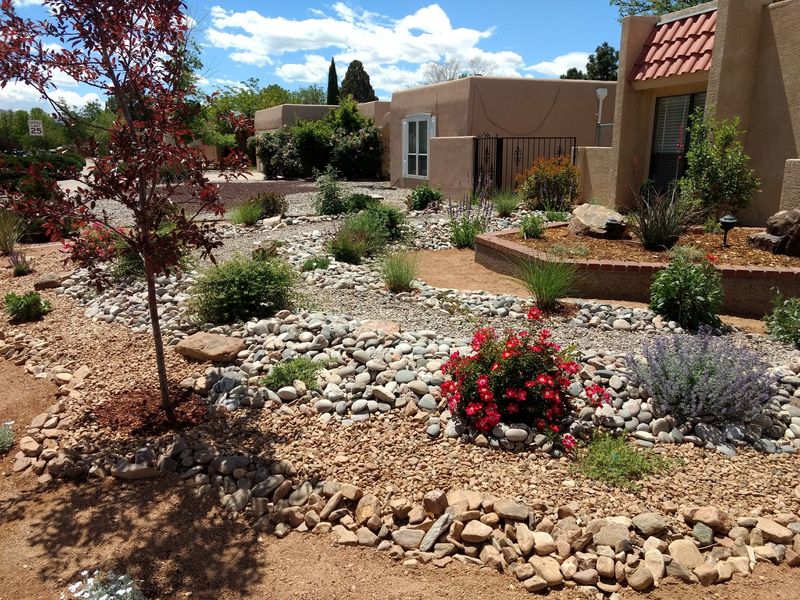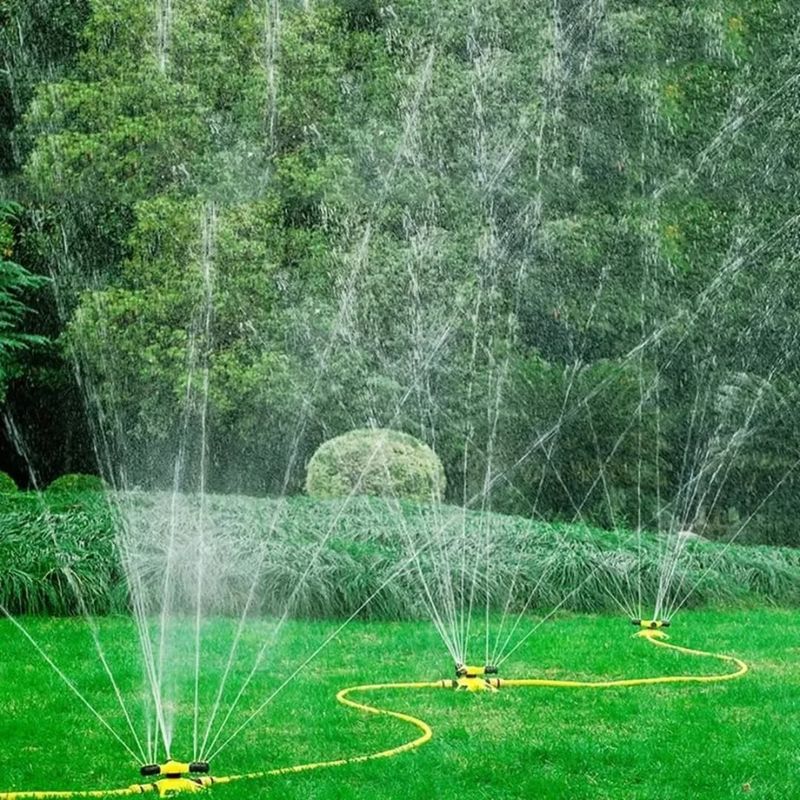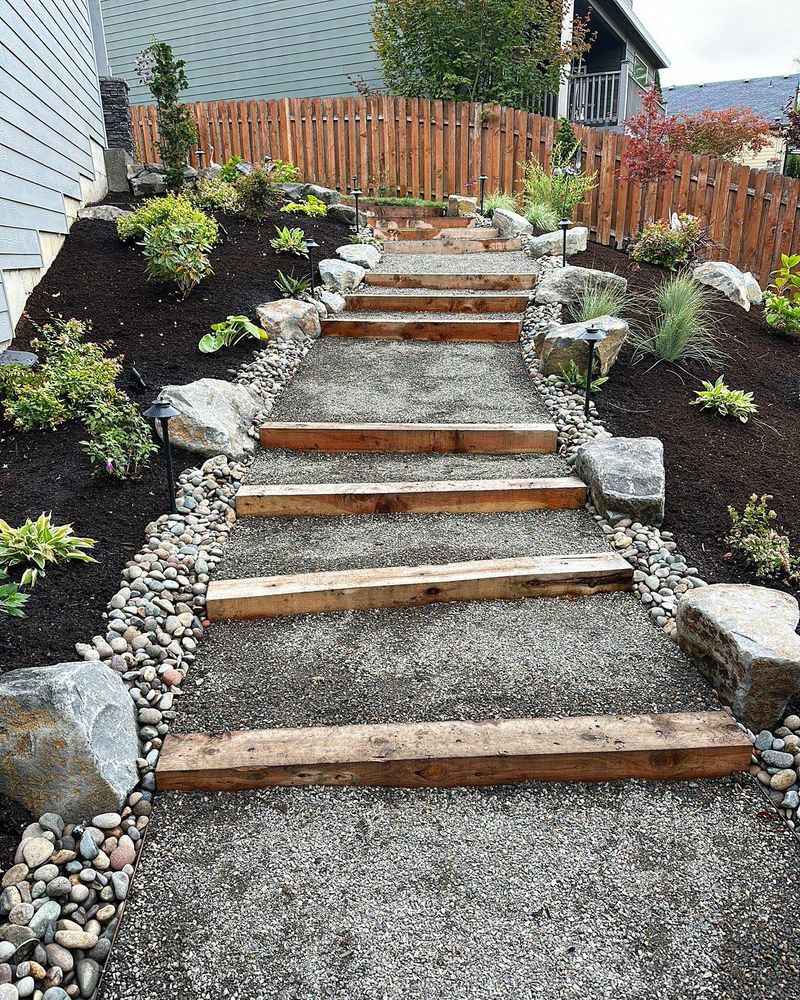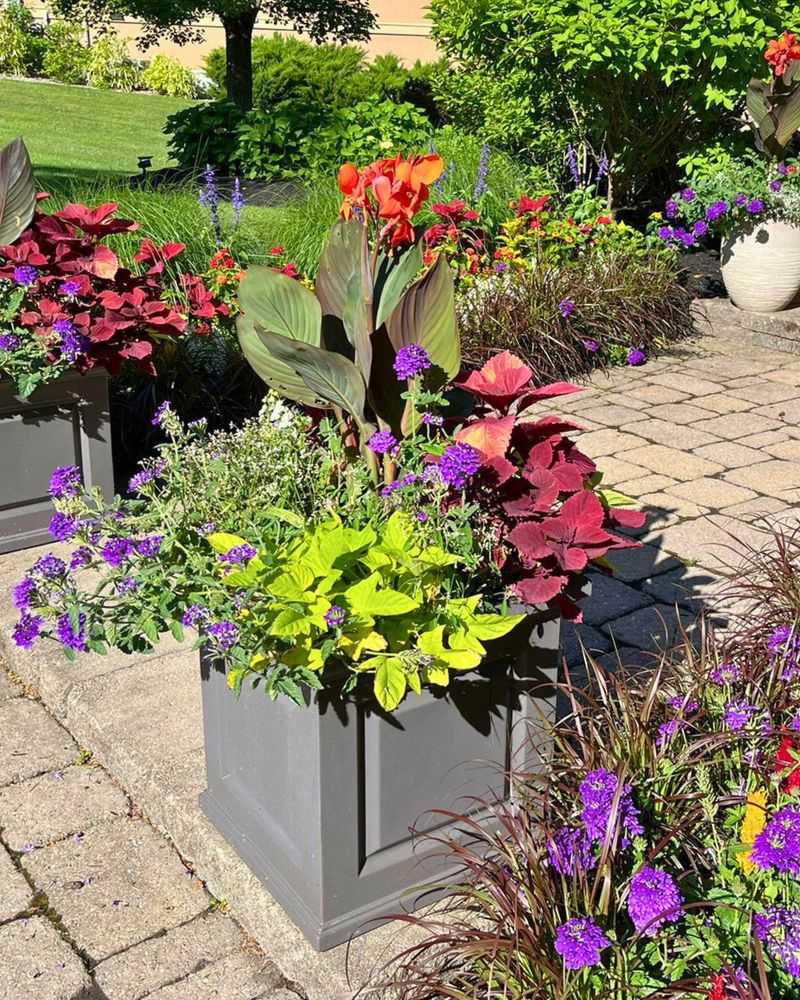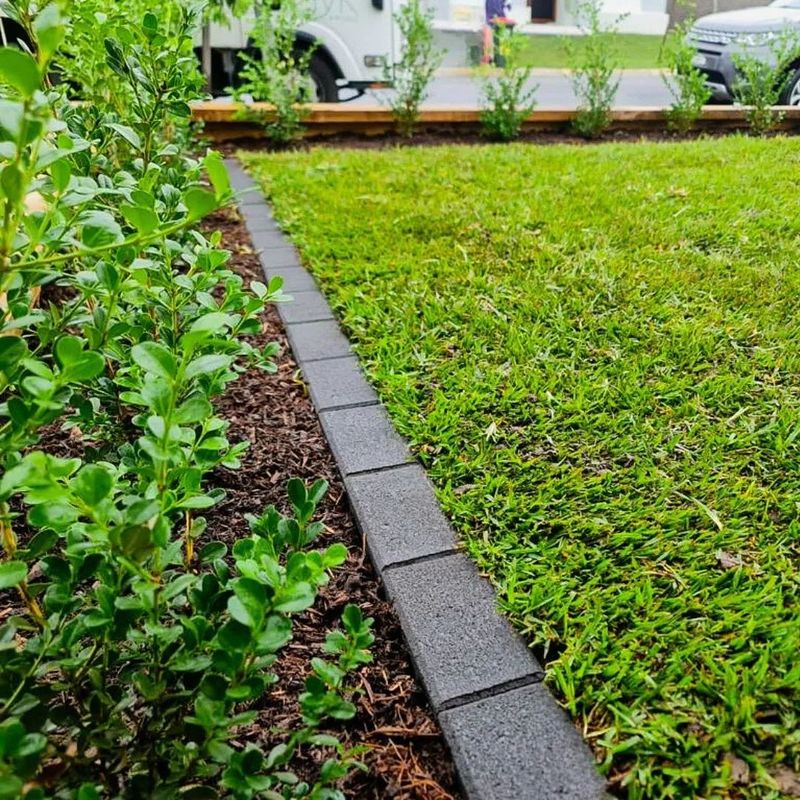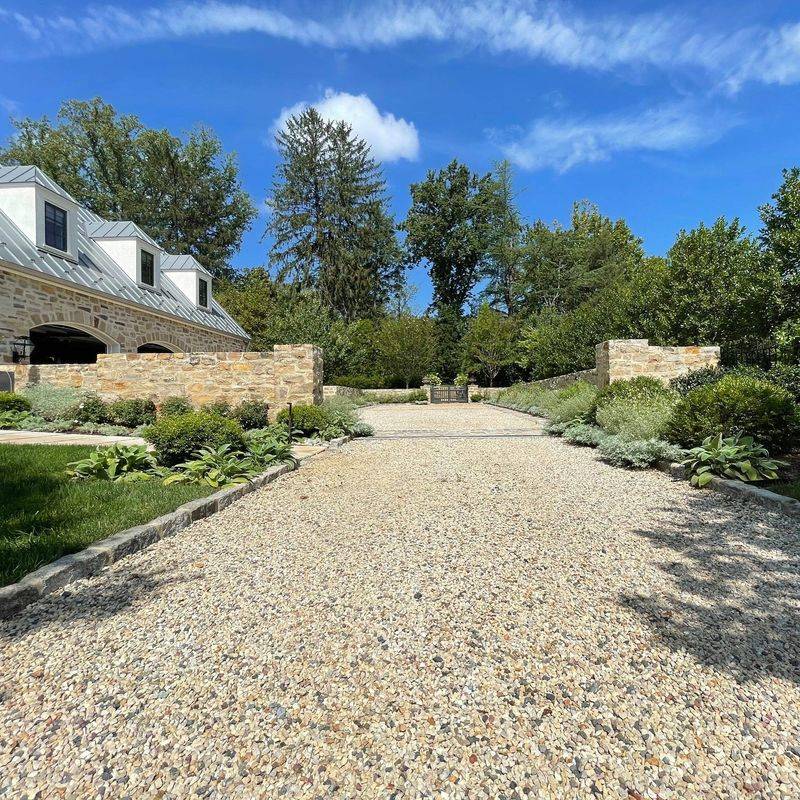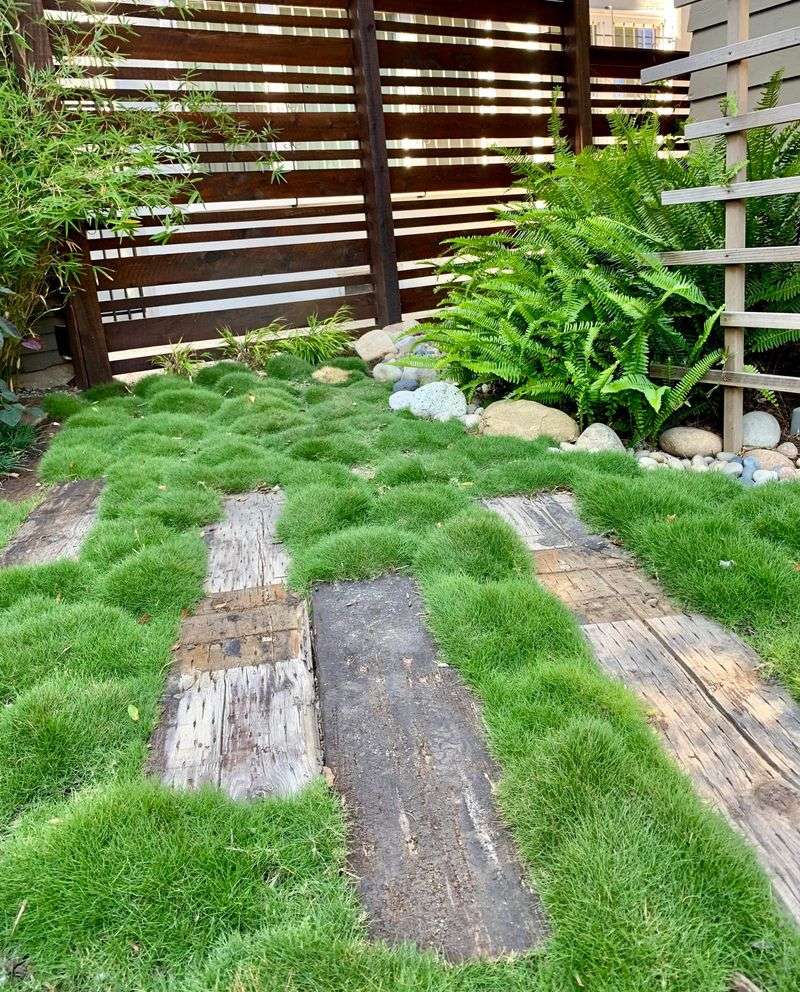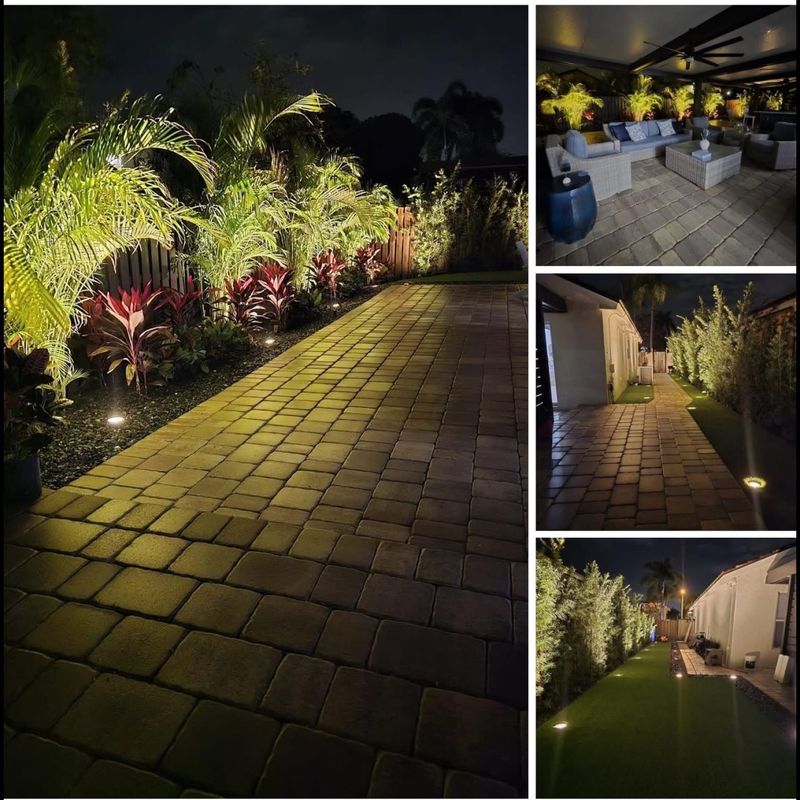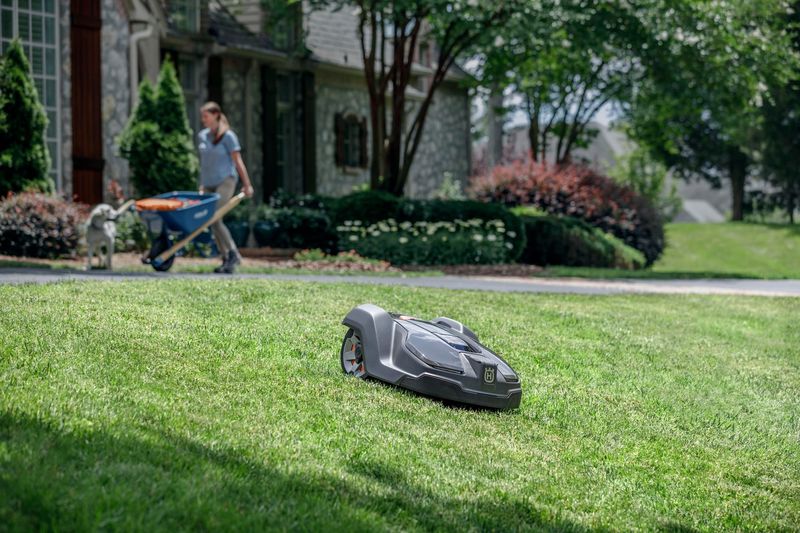Sick of spending your Saturdays knee-deep in mulch and mower clippings? If yard work feels more like hard labor than a labor of love, you’re not alone. The good news? You don’t need a green thumb or hours to spare to have a yard that turns heads.
These landscaping ideas are all about minimal effort, maximum impact—because when it comes to outdoor upkeep, less really can be more.
1. Artificial Turf Takes the Work Out of Lawns
Modern synthetic grass looks amazingly realistic while eliminating mowing forever. The initial investment pays off quickly when you consider the savings on water bills, fertilizer, and equipment maintenance.
Installation typically takes a weekend, and many options include proper drainage systems. The best part? Your lawn stays perfectly green year-round with zero effort from you.
2. Rock Gardens Create Drama Without Demands
Rocks don’t need watering, trimming, or fertilizing! Combined with a few drought-resistant plants, a rock garden brings natural beauty to your space with minimal upkeep. Large boulders create focal points, while smaller stones fill spaces between plants.
Crushed stone or pea gravel works well for pathways. After the initial setup, your main task will be occasional weeding or rinsing dust off larger stones.
3. Native Plants Thrive With Little Help
Plants that naturally grow in your region already know how to handle local conditions. They’ve adapted to your climate’s rainfall patterns, soil type, and temperature ranges. Visit a local nursery to find native options that match your yard’s sun exposure.
Once established, these plants typically need minimal watering beyond natural rainfall. As a bonus, they provide food and habitat for local birds, butterflies, and beneficial insects.
4. Mulch Makes Everything Easier
A thick layer of mulch works like magic in garden beds. It prevents weeds, retains moisture, and slowly improves your soil as it breaks down. Apply 2-3 inches around trees, shrubs, and perennials, keeping it slightly away from stems.
Wood chips, pine straw, or cocoa hulls are popular options. Most mulched beds need refreshing just once a year, making this one of the simplest yard improvements.
5. Groundcover Plants Replace Grass Naturally
Low-growing plants like creeping thyme, sedum, or clover create living carpets that need no mowing. They spread to fill spaces, choking out weeds naturally. Many groundcovers offer seasonal flowers or interesting textures. Some varieties even tolerate light foot traffic.
Plant them 12-18 inches apart, water until established, then enjoy watching them grow together into a seamless, carefree surface.
6. Perennial Gardens Keep Coming Back
Unlike annuals that need replacing every year, perennials return season after season. Choose varieties that bloom at different times for continuous color with minimal intervention. Coneflowers, black-eyed Susans, and daylilies are famously easy options.
Group plants with similar water needs together. After the first year, established perennials typically need only occasional deadheading and a yearly cutback to stay looking their best.
7. Raised Beds Control Garden Chaos
Elevated planting areas bring order to your landscape while reducing bending and stooping. Fill them with high-quality soil to give plants the perfect growing environment from day one. The defined edges keep grass from invading and make maintenance simpler.
For even less work, install drip irrigation with a timer. Cedar, composite materials, or stone all make excellent, long-lasting raised bed materials.
8. Xeriscaping Eliminates Irrigation Headaches
Originally developed for desert regions, xeriscaping principles work anywhere to create water-wise landscapes. The approach uses drought-tolerant plants arranged in zones based on water needs. Succulents, ornamental grasses, and many Mediterranean herbs thrive with minimal irrigation.
Replacing thirsty lawns with gravel, decomposed granite, or hardscaping dramatically reduces water bills. Once established, these landscapes practically take care of themselves.
9. Automatic Irrigation Handles Watering For You
Smart sprinkler systems have revolutionized yard care by delivering precisely the right amount of water exactly when plants need it. Many systems now include rain sensors and can be controlled from your phone.
Underground drip irrigation targets roots directly, reducing water waste through evaporation. Program zones based on plant needs and soil conditions. The initial setup cost quickly pays off in water savings and healthier plants with zero effort.
10. Hardscaping Creates Maintenance-Free Zones
Patios, decks, and stone walkways need almost no upkeep while creating usable outdoor living spaces. An occasional sweep or rinse keeps them looking fresh. Concrete pavers come in styles mimicking natural stone at lower prices.
Composite decking resists rotting and never needs staining. Consider permeable options that allow rainwater to soak through, reducing runoff and puddles while being environmentally friendly.
11. Container Gardens Offer Flexible Beauty
Pots and planters let you enjoy gardening without committing to in-ground maintenance. Group containers on patios or near entryways for maximum impact with minimal effort. Choose large containers that won’t dry out quickly. Self-watering options reduce maintenance even further.
Fill with slow-growing shrubs or drought-tolerant perennials instead of thirsty annuals. When seasons change, simply move pots to protected areas or replace plants as needed.
12. Defined Borders Keep Gardens In Line
Clean edges between lawn and garden beds prevent grass invasion and create a polished look. Metal, plastic, stone, or brick edging materials all work well. Sunken borders that allow mower wheels to roll along the edge make grass trimming much easier.
For the most permanent solution, consider poured concrete curbing that withstands years of abuse from mowers and trimmers. Good borders can reduce edge maintenance by 80%.
13. Gravel Pathways Never Need Mowing
Crushed stone or pea gravel creates attractive walkways that stand up to heavy use without growing. Unlike concrete, gravel paths allow rainwater to soak into the ground naturally. Professional installation includes landscape fabric underneath to prevent weeds.
Occasional raking keeps the surface level. Choose angular gravel that locks together rather than round pebbles that shift underfoot. Edging materials keep the gravel contained for years of carefree use.
14. No-Mow Grass Varieties Cut Work Dramatically
Newer grass varieties grow slowly and stay naturally short. Options like fine fescue, buffalo grass, and microclover need cutting just a few times yearly, if at all. These special grasses typically grow 4-6 inches tall then stop, creating a meadow-like appearance.
They require less water and fertilizer than traditional lawns. The natural look works especially well in casual landscapes or larger properties where a manicured appearance isn’t necessary.
15. Outdoor Lighting Goes Solar
Solar-powered landscape lights eliminate the need for wiring, transformers, or complicated installation. Simply stake them where you want illumination and let the sun do the work. Modern LEDs provide bright, reliable light for pathways, garden features, or security.
Quality units include rechargeable batteries that store enough power for cloudy days. The best part? No electricity costs and no maintenance beyond occasional lens cleaning.
16. Lawn Robots Handle Mowing Automatically
Robotic mowers have transformed lawn care by handling the most time-consuming yard task completely independently. These battery-powered devices work within a boundary wire, quietly trimming grass to a perfect height.
They mulch clippings finely as they cut, returning nutrients to the soil. Many models can handle slopes, work in rain, and return themselves to charging stations. Owners report healthier lawns since robots cut frequently rather than removing too much at once.
17. Leaf Mulching Eliminates Raking
Fall cleanup becomes effortless when you mulch leaves instead of raking them. Special mower blades shred fallen leaves into tiny pieces that decompose quickly and feed your lawn. The process adds valuable organic matter and nutrients naturally.
For garden beds, a mulching blower can convert leaves into protective winter mulch. Studies show lawns treated this way need less fertilizer and stay greener through summer dry spells.


